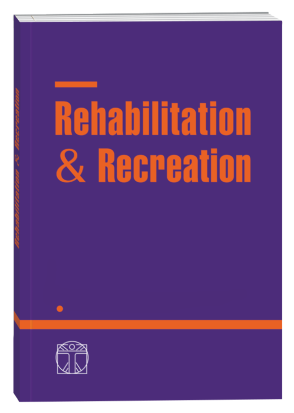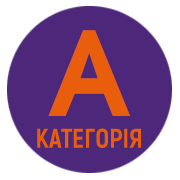DYNAMICS OF PHYSICAL DEVELOPMENT INDICATORS, BODY GONIOMETRY AND PHYSICAL FITNESS OF WOMEN IN THE FIRST PERIOD OF MATURE AGE UNDER THE INFLUENCE OF MEANS AND METHODS OF THE PROGRAM OF PHYSICAL EDUCATION AND HEALTH CLASSES BASED ON THE CONSIDERATION OF THE
DOI:
https://doi.org/10.32782/2522-1795.2025.19.2.26Keywords:
women, mature age, spatial organization of the body, physique, dynamics, physical development, physical fitness, posture, goniometry, programAbstract
Introduction. Today, every person has a pressing question regarding ways and methods of maintaining good health, a high level of health and the required level of performance. To solve this issue, it is necessary, first of all, to focus on the problem of finding innovative means of physical education, the use of which will contribute to increasing the level of physical condition of a person. The purpose of the study is to determine the dynamics of indicators of physical development, body goniometry and physical fitness of women 23-26 years old under the influence of the tools and methods of the author’s program. Research methods: theoretical analysis and generalization of literary sources; photography and posture analysis, pedagogical experiment, pedagogical testing, methods of mathematical statistics. The study involved 45 women aged 23-26. Results. It was found that in all three groups there was a statistically significant improvement in muscle strength and endurance, an improvement in goniometric characteristics of the body, in particular, a decrease in the angle formed by the vertical and the line connecting the spinous processes of the vertebrae СVII and LV. In addition, the percentage of women who were at risk of developing diseases associated with excess body weight decreased, and the percentage of those whose body structure as a whole became harmonious increased. Each body type had its own characteristics in response to the program, which corresponded to the individual-typological approach underlying it. For women with an asthenic type, the effectiveness of the program is determined by an increase in body weight, an increase in its girth dimensions, a decrease in deviations in the angle of inclination of the body and an increase in the level of physical fitness at the level of muscle strength and endurance. The achievements of women with a picnic body type, which indicated the effectiveness of the proposed program, were, on the contrary, a decrease in body weight, a decrease in all its girth dimensions, except for the pelvic girth, a decrease in deviations from the norm in the angle of inclination of the torso, an improvement in flexibility and endurance. For the category of women with a normosthenic body type, the effectiveness of the program was demonstrated, first of all, by the improvement of all goniometric indicators and an increase in the level of physical fitness. The program contributed to the growth of strength, endurance and flexibility, as well as the harmonization of their physical form, namely, a decrease in body weight, circumferential dimensions of the waist, pelvis and hip. Conclusions. The author's program has a positive effect on physical development, body goniometry and physical fitness of women aged 23-26.
References
1. Кашуба В.О., Григус І.М., Руденко Ю.В. Стан просторової організації тіла осіб зрілого віку: виклик сьогодення Influence of physical culture and sports on the formation of an individual healthy lifestyle : Scientific monograph. Riga, Latvia : Baltija Publishing. 2023. рp. 56–68. DOI: https://doi.org/10.30525/978-9934-26-280-7-3.
2. Стопа М. Особливості просторової організації тіла жінок 23–26 років. Фізична культура, спорт та здоров’я нації. 2024. № 17(36). С. 406–420. DOI: 10.31652/2071-5285-2023-15(34)-406-420.
3. Стопа М. Характеристика гоніометрії тіла жінок першого періоду зрілого віку із різними типами тілобудови. OLYMPICUS. 2024. № 3. С. 148–157. DOI: https://doi.org/10.24195/olympicus/2024-3.19.
4. Стопа М. Особливості фізичної підготовленості жінок першого періоду зрілого віку з різними типами тілобудови. Фізична культура, спорт та здоров’я нації. 2024. № 18(37). С. 43–55. DOI: 10.31652/2071-5285-2024-18(37)-43-55.
5. Ткачова А.І. Диференційований підхід у заняттях оздоровчим фітнесом жінок першого періоду зрілого віку з урахуванням просторової організації тіла : дис. … докт. філос. : 017. Київ, 2020. 262 с.
6. Harvey R., Peper E., Mason L., Joy M. Effect of posture feedback training on health. Appl Psychophysiol Biofeedback.;45(2):59–65. 2020. http://dx.doi.org/10.1007/s10484-020-09457-0 PMid: 32232605. http://dx.doi.org/10.1007/s10484-020-09457-0
7. Hellem T., Dolan H., Parker M., Taylor-Piliae R. The Perspectives and Experiences of Women Who Attend a Mind-Body Dance Fitness Program: A Qualitative Descriptive Study. Journal of Behavioral Health and Psychology, 2023;12(2). https://doi.org/10.33425/2832-4579/23053
8. Kashuba V., Tomilina Y., Byshevets N., Khrypko I., Stepanenko O., Grygus I., Smoleńska O., Savliuk S. Impact of Pilates on the Intensity of Pain in the Spine of Women of the First Mature age. Teorìâ Ta Metodika Fìzičnogo Vihovannâ, 2020. 20(1), 12–17. https://doi.org/10.17309/tmfv.2020.1.02
9. Lazko O., Byshevets N., Kashuba V., Lazakovych Yu., Grygus I., Andreieva N., Skalski D. Prerequisites for the Development of Preventive Measures Against Office Syndrome Among Women of Working Age. Teorìâ ta Metodika Fìzičnogo Vihovannâ. 2021. 21(3), 227–234. https://doi.org/10.17309/tmfv.2021.3.06 ISSN 1993-7989 (print). ISSN 1993-7997 (online). ISSN-L 1993-7989.
10. Lazko O., Byshevets N., Plyeshakova O., Lazakovych Yu., Kashuba V., Grygus I., Volchinskiy A., Smal J., Yarmolinsky L. Determinants of office syndrome among women of working age. Journal of Physical Education and Sport. Vol 21 (Suppl. issue 5), 2827–2834. DOI: 10.7752/jpes.2021.s5376.
11. Ljubojevic A., Jakovljevic V., Bijelic S., Sвrbu I., Tohгnean D.I., Albinг C., Alexe D.I. The Effects of Zumba Fitness® on Respiratory Function and Body Composition Parameters: An Eight-Week Intervention in Healthy Inactive Women. International Journal of Environmental Research and Public Health, 2023;20(1):314. https://doi.org/10.3390/ijerph20010314
12. Podrihalo O., Podrigalo L., Podavalenko O., Perevoznyk V., Paievskyi V., Sokol K. Use of indices to assess women’s health in wellness fitness. Pedagogy of Physical Culture and Sports, 2024;28(2):132–140. https://doi.org/10.15561/26649837.2024.0207
13. Reppa C.M., Bogdanis G.C., Stavrou N.A.M, Psychountaki M. The Effect of Aerobic Fitness on Psychological, Attentional and Physiological Responses during a Tabata High-Intensity Interval Training Session in Healthy Young Women. International Journal of Environmental Research and Public Health, 2023;20(2): 1005. https://doi.org/10.3390/ijerph20021005
14. Silva M.M., Santos A.M., Arossi G.A. Body posture and the state of mood in women. Rev Bras Cineantropom Desempenho Hum 25:e95862. 2023. DOI: https://doi.org/10.1590/1980-0037.2023v25e95862.
15. Tkachova A., Dutchak M., Kashuba V., Goncharova N., Lytvynenko Y., Vako I., Kolos S., Lopatskyi S. Practical implementation of differentiated approach to developing water aerobics classes for early adulthood women with different types of body build. Journal of Physical Education and Sport. 2020. 20. (S. 1). 456–60. DOI:10.7752/jpes.2020.s1067.
Downloads
Published
How to Cite
Issue
Section
License

This work is licensed under a Creative Commons Attribution-NonCommercial-NoDerivatives 4.0 International License.





